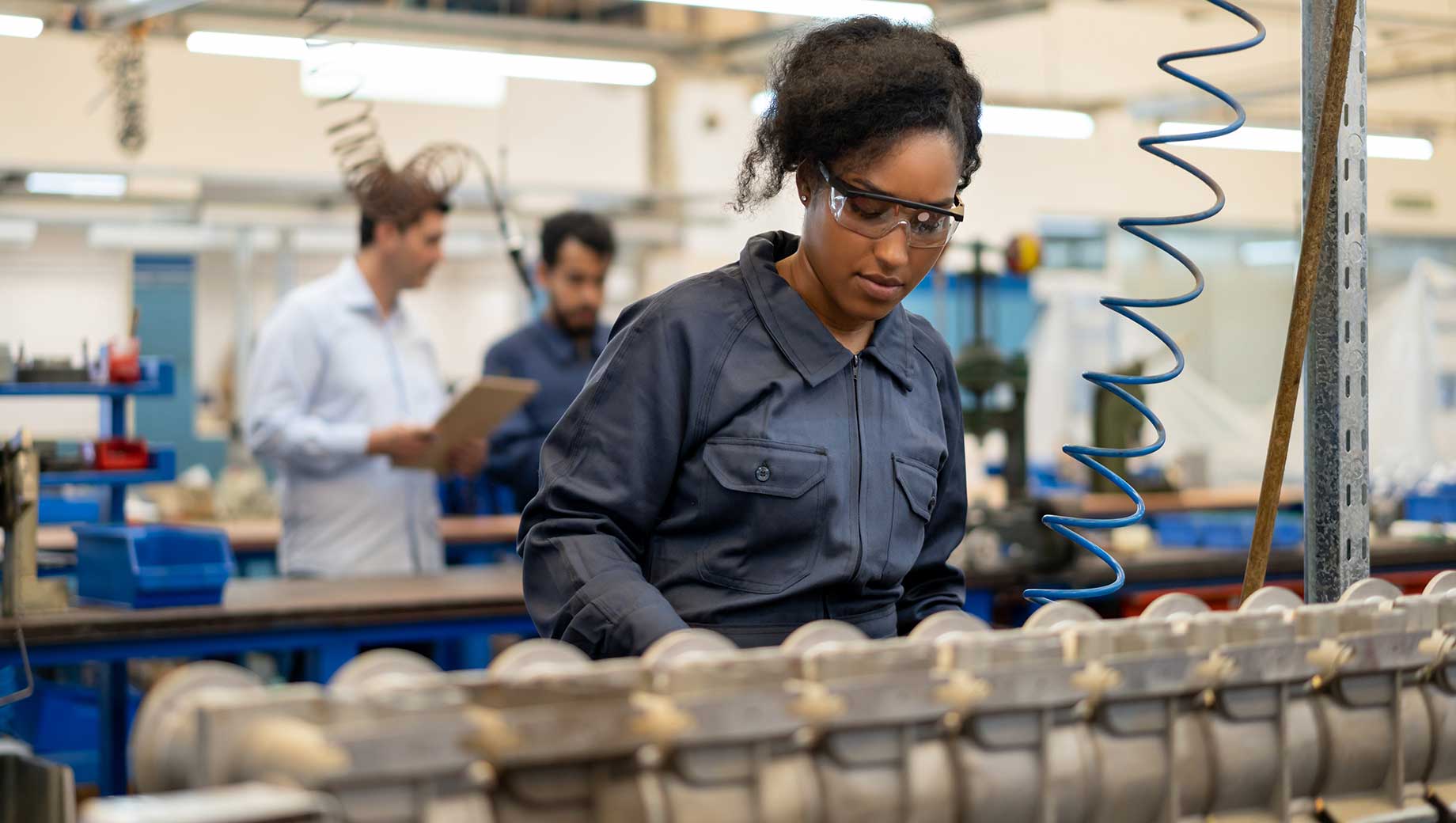Story Highlights
- Beware of over-focusing on remote workers at the expense of those on-site
- Listen to on-site employees to understand their evolving needs
- Use seven best practices to engage people on-site
In recent years, leaders have dedicated considerable resources to making remote and hybrid work as effective and engaging as possible. These essential efforts have helped employees adapt and achieve surprising performance.
While making hybrid work "work" has been an urgent challenge, leaders can't afford to neglect another organizational need -- one that predated the pandemic and hasn't gone anywhere. Put simply, the large population of workers who never left -- the on-site workers -- have engagement needs, too.
Throughout the pandemic, on-site employees maintained factories, hospitals, plants, distribution centers, police and fire departments, emergency services, utilities, grocery stores, retail stores and countless other aspects of businesses and society. The nature of their work may not have changed as drastically as other employees, but their needs as people are evolving.
For instance, perhaps some on-site workers are struggling to maintain social wellbeing. Others may be challenged with "have and have not" syndrome as they compared their role requirements with teams that now have a great deal of flexibility.
Left unaddressed, even small needs or minor miscommunication can breed rampant disengagement and decimate workers' loyalty. On the other hand, an engaging work environment not only helps prevent turnover and quiet quitting but also supports excellent performance and customer outcomes.
Leaders need to listen actively to on-site workers -- seeking to understand their needs, including what's changed and what's stayed the same. Then, take action to support each individual.
Leaders need to listen actively to on-site workers -- seeking to understand their needs, including what's changed and what's stayed the same. Then, take action to support each individual.
To help, here are best practices based on Gallup's experience guiding leaders to engage on-site employees and make them glad they stayed.
1. Start With the Obvious: Tell Them They Matter
Clear expectations are fundamental to employee engagement -- including expectations about role requirements. While it may seem obvious, leaders should clearly define and communicate the job responsibilities and expectations associated with on-site roles -- including the "what, how and why" about various jobs.
This is particularly essential as ways of working shift and teams settle into new norms. Be clear and honest about where and how various teams are expected to work. Remember, most on-site workers already know their job requires in-person work -- but leaders demonstrate care and respect when they take the time to explain what's changing and why.
Acknowledge the in-person nature of on-site workers' roles (including the sacrifice involved); don't ignore the obvious.
2. Connect On-Site Workers to Purpose
Just as important is clear communication about how on-site workers' efforts support the broader purpose every day -- particularly when their impact is connected to where they work. By continually connecting on-site workers' roles to the big picture, leaders reinforce how vital their work is and how their contributions make a difference that no other employees can make.
Leaders should hold managers accountable for discussing mission and purpose individually, and with their teams, so all employees understand how and why their work matters. Gallup research shows that employees who are in lockstep with their company's purpose display higher performance, including greater agility and resilience to change.
Helping managers do this well may require repositioning and upskilling your managers to become coaches. When managers are taught coaching skills, which include collaborative goal setting, ongoing feedback and accountability, they can use them to develop high levels of trust with their employees.
When managers are taught coaching skills, which include collaborative goal setting, ongoing feedback and accountability, they can use them to develop high levels of trust with their employees.
Another best practice many of Gallup's clients have adopted is sharing real-life client, customer or patient stories about how on-site employees' work makes a difference. Recognition for on-site workers' efforts sends powerful signals that leaders value them -- plus, it reiterates to employees what success looks like.
Leaders can also give visibility to on-site workers' impact with "visits" to the ultimate recipients of their efforts -- such as with a trip to a customer's plant to see how the seatbelts on-site workers make are installed in vehicles. The best leaders use a variety of visits and stories about the impact on-site workers have to create powerful purpose moments for everyone in the company.
3. Flex Where and Whenever Possible
In recent years, organizations have accomplished incredible feats, including rapid-fire transitions to remote work. Further, many organizations rapidly adjusted to ensure on-site employees -- particularly essential workers -- stayed as safe as possible while working on-site through the pandemic.
Agile, outside-the-box thinking can also improve the new world of the on-site worker. The best leaders are thinking differently to provide flexibility wherever possible to improve every employee's experience.
The best leaders are thinking differently to provide flexibility wherever possible to improve every employee's experience.
Consider healthcare environments for example. Traveling nurses were a necessity in the pandemic; now, leaders can adapt this model to give on-site workers the best job possible. Here's another example: Many manufacturing workplaces embraced shorter weeks with slightly longer shifts to give on-site workers more days off. Further, some utility companies now only require field workers to stop at the main building once a week rather than daily.
When flexibility in location isn't possible, leaders can also get creative by flexing in areas such as dress code. Ask yourself: Where has flexibility been ruled out or not considered before, and how can we think creatively to improve our employees' experiences?
The best leaders take it a step further by finding out what flexibility means to on-site workers. Some employees may simply appreciate being able to leave briefly during the day and attend to real-life issues without feeling overly scrutinized. Common sense flexibility can work if there are the right parameters in place to make sure a person's work is covered and the time needed is within reason.
Before you say "no," consider the incredible flexibility the pandemic demanded and how workplaces learned from it. Sometimes there is more room to flex than you may think.
4. Hire People Who Want the On-Site Job
With any job opening, clarity about the role, team and working conditions is crucial for an exceptional onboarding experience that leads to high performance. Leaders need to communicate the reality of the job, particularly where the work will be accomplished. The best workplaces give candidates a clear, detailed picture of the job. For instance, a realistic job preview might list the weekly required in-person time for hybrid roles.
Unclear expectations can lead to serious negative consequences -- from poor performance to turnover.
Leaders hiring for on-site roles should aim to attract candidates who thrive with in-person work -- people whose strengths match the nature of the role. Relationship-building strengths are a key example -- many employees prefer in-person settings because they naturally crave the camaraderie that comes with face-to-face teamwork.
Leaders hiring for on-site roles should aim to attract candidates who thrive with in-person work -- people whose strengths match the nature of the role.
Further, your employer branding -- including your employee value proposition -- should communicate what your workplace does to support and celebrate on-site staff, as well as how their work connects to the big picture.
Gallup's best clients also train and develop hiring managers to conduct effective interviews. Talented hiring managers listen to understand -- and never aim to change candidates to become in-person aficionados if they're not naturally comfortable with that type of work. One manager put it this way: "I've actually learned to really listen to what candidates tell me. It's kind of shocking how honest they can be if you are willing to just let them talk and you just really listen."
5. Make Work a Place People Want to Be
One of the vital factors in engaging on-site workers is creating an environment employees look forward to going to each day. In fact, Gallup's research shows that connection to culture drives professional and personal results. When employees strongly agree that "I feel connected to my organization's culture," they are:
- 3.7 times as likely to be engaged at work
- 5.2 times as likely to strongly agree they would recommend their workplace as a great place to work
- 68% less likely to report feeling burned out at work very often or always
- 55% less likely to be actively looking for another job
Let's be honest: Building a great place to work takes hard work and dedication. But leaders can move the needle when they focus on their unique purpose as a company -- and how to bring that purpose to life at the local level in employees' day-to-day experiences. These efforts do pay off: An engaging work culture is a magnet for talent and can keep that talent for the long term. An engaging environment also gives on-site employees what they need to feel excited to go to work -- because they know they belong.
An essential part of building a great work environment is understanding the nuances of what it is and isn't--and flashy perks like pizza parties are not the secret. Gallup's research shows that an engaging manager -- someone who genuinely cares about their team members -- is perhaps the most important driver of an engaging culture.
An effective manager cultivates an environment where people walk in the door each day and feel seen, respected and valued for who they are and what they bring to the table. Great managers see employees as human beings who contribute significantly and genuinely matter as people.
6. Get the Right Managers in Place
This is why leaders need to use the right strategy when it comes to naming managers. Gallup has found that the manager accounts for up to 70% of the variance in team engagement.
Great managers are stabilizers for on-site employees. They are the person in the work environment who can activate on flexing where possible based on the unique needs of that person. They are the person in the workplace who can create stability in uncertain times and who can bring the team together to celebrate in good times. Great managers are the key to bringing the human element to life for on-site teams. They are the conduit through which that sense of value and involvement comes to life for the employee.
7. Create a Culture of "Test and Flex" for a More Engaging Future
The last few years have taught us a lot, including that we can surprise ourselves. In response to disruption, workplaces were forced to think on their toes, adapt and innovate. Many are now thriving like never before -- despite the odds. And it wouldn't have been possible without essential workers who worked loyally through the pandemic.
Most leaders have done their best to say "thank you" and make front-line workers feel appreciated -- particularly during the pandemic. For a time, employees felt more connected to their organization (in 2020, nearly four in 10 employees strongly agreed that they felt connected to their company's culture) but now that number has dropped to just 32% of employees. For leaders globally, expressing real gratitude takes more than words: You need to demonstrate appreciation by providing a best-in-class employee experience for on-site employees.
The best leaders are challenging themselves to think differently, ask questions and partner with their people to make the unimaginable possible. Be willing to experiment and flex.
After all, change will always be here. And if you listen honestly to the needs of your on-site workers, your workplace might surprise you again with what it can achieve.
Make engaging your employees a priority:
- Learn more about employee engagement and why it's important.
- Discover the Q12, Gallup's research-back employee engagement survey.
- Explore ways to partner with Gallup to engage employees, no matter where they are.




